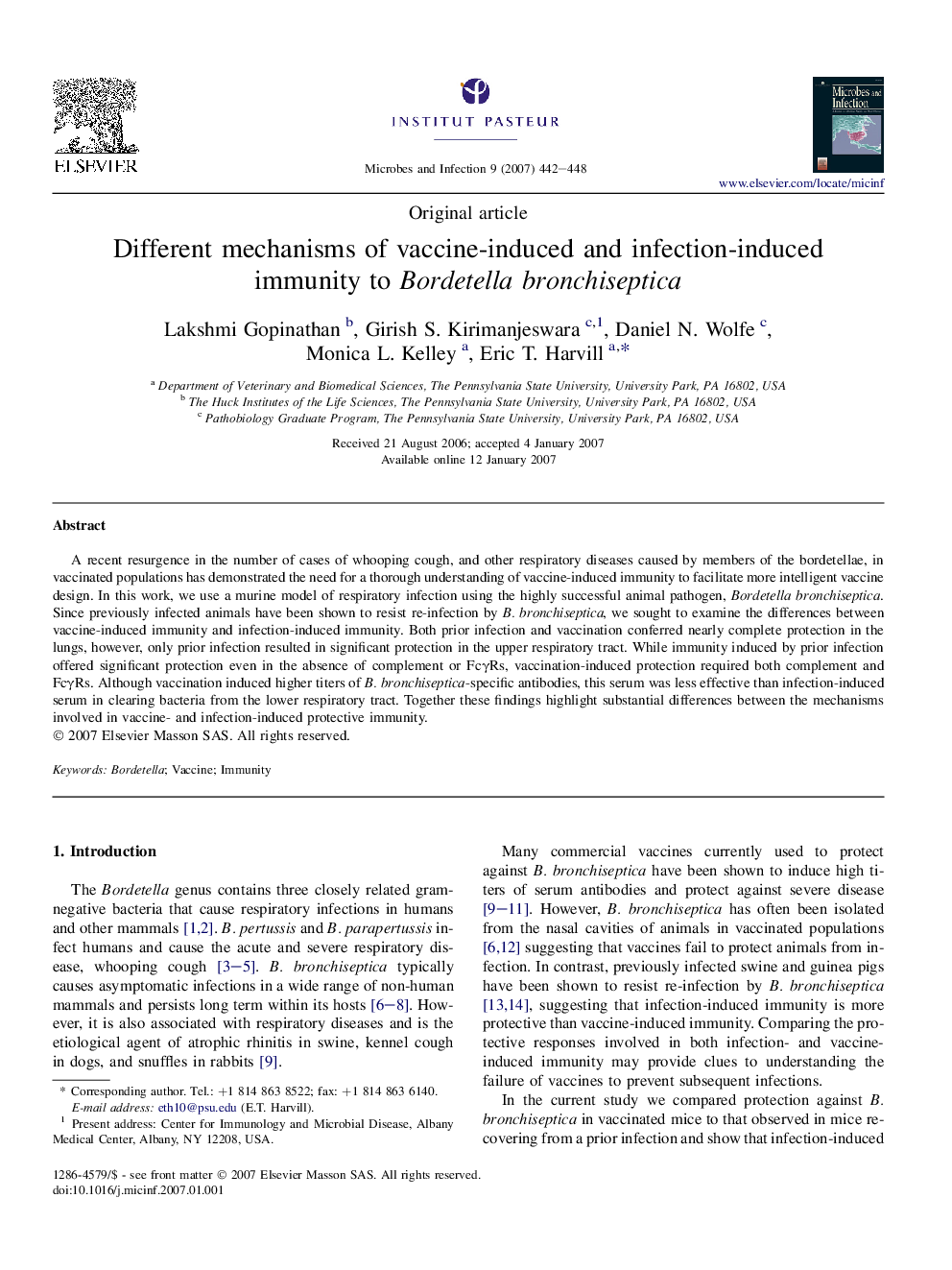| Article ID | Journal | Published Year | Pages | File Type |
|---|---|---|---|---|
| 3415884 | Microbes and Infection | 2007 | 7 Pages |
A recent resurgence in the number of cases of whooping cough, and other respiratory diseases caused by members of the bordetellae, in vaccinated populations has demonstrated the need for a thorough understanding of vaccine-induced immunity to facilitate more intelligent vaccine design. In this work, we use a murine model of respiratory infection using the highly successful animal pathogen, Bordetella bronchiseptica. Since previously infected animals have been shown to resist re-infection by B. bronchiseptica, we sought to examine the differences between vaccine-induced immunity and infection-induced immunity. Both prior infection and vaccination conferred nearly complete protection in the lungs, however, only prior infection resulted in significant protection in the upper respiratory tract. While immunity induced by prior infection offered significant protection even in the absence of complement or FcγRs, vaccination-induced protection required both complement and FcγRs. Although vaccination induced higher titers of B. bronchiseptica-specific antibodies, this serum was less effective than infection-induced serum in clearing bacteria from the lower respiratory tract. Together these findings highlight substantial differences between the mechanisms involved in vaccine- and infection-induced protective immunity.
